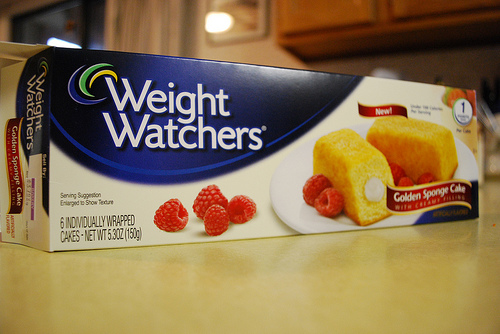Weight Watchers, the widely recognized weight loss program (and publicly traded company! – NYSE:WTW) was founded in 1963 in Brooklyn. In Weight Watchers, every food has a “point value,” which is a function of the calories, fat, and fiber content of the particular food. Additionally, every dieter has a point target – an ideal number of points to consume each day to achieve their weight loss goal.
Early iterations of Weight Watchers were similar to diabetic food exchanges: each day you had to eat a certain number of fruit and vegetable servings, a certain number of grain servings, etc. These early programs are still regarded by dietetics professionals as some of the best because they encouraged a balanced diet.
However, the ‘80s, ‘90s, and ‘00s saw several significant changes to the original Weight Watchers plans. While dieters were still encouraged to eat their fruits and veggies, a balanced diet per se was no longer the cornerstone of the program. Instead, dieters had the freedom to eat whatever they desired, so long as they remained within their allotted points range.
 |
| Yup, it's a diet twinkie. |
Several years ago, Weight Watchers introduced an alternative plan to the “points” system. They called this alternative plan “Core.” On the core plan, a dieter could eat his/her fill of certain whole foods (e.g. fresh and frozen fruits and vegetables, whole grain pasta and rice, lean meats, eggs, fat-free dairy products), but had to count foods consumed that were not on the core list (e.g. bread of any kind, alcohol, reduced or full-fat dairy products). The core plan was a step in the right direction of consuming a primarily whole foods-based diet, but many people – dieters and nutrition professionals alike – felt it was too restrictive, especially with regard to fats, which were limited to two teaspoons (two teaspoons!) of oil a day. As a future dietetics professional, I find myself repeating that no one should have the goal of attaining a “perfect” diet (not that such a thing exists), but should instead work toward a moderate diet.
Weight Watchers, you have heard our plea! In a move back toward a more balanced diet, the company has introduced the Points Plus system. Points Plus attempts to marry the flexibility of the old Points program with the whole foods focus of Core.
The Points Plus system is unique in several ways:
- Higher point allotments: Dieters are given a higher daily point target, which means they can eat more on a daily basis. While this may translate into a slower rate of weight loss, it’s a positive step because consuming too few calories not only slows down the basal metabolic rate (your “metabolism”), but also contributes to feelings of deprivation. And we all know what happens when you start feeling deprived:
- No rollovers: In the past, dieters had a weekly “bank account” of 35 extra points, which they could use or not use at their discretion. The idea behind rollovers was that we are hungrier on some days than on others. The problem is that these “flex points” allowed dieters to save up for a binge, instead of spacing them out and using them as needed. Without rollovers, it will be easier to adopt consistent eating patterns.
- Fruits + Veggies = 0 points*: You heard me right. In the past, fruits and veggies had points values just like every other food; i.e., they counted toward your daily point target. Therefore, unless you already loved produce, there was little incentive to choose an apple when, say, you could eat a small piece of candy for the same amount of points.
*Except for certain items, including avocados, potatoes, and corn.
- Increased emphasis on whole foods: Going along with the new position on fruits and vegetables is a new position on processed foods. In the past, a 100-calorie apple and a 100-calorie cookie would both have set you back 2 points. Now, however, the apple is “free” (0 points) and the cookie will set you back not 2 but 4 points. This harder stance with respect to processed foods is designed to encourage increased consumption of whole foods, including fruits and vegetables, whole grains, low-fat and fat-free dairy products, and lean proteins.
Just as many dieters are excited about the new Weight Watchers program, some are frustrated by the changes. What do you think of Points Plus?






